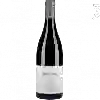
Winery Honoré LavigneBourgogne Mise d'Origine
In the mouth this red wine is a with a nice freshness.
This wine generally goes well with poultry, beef or veal.
Taste structure of the Bourgogne Mise d'Origine from the Winery Honoré Lavigne
Light | Bold | |
Smooth | Tannic | |
Dry | Sweet | |
Soft | Acidic |
In the mouth the Bourgogne Mise d'Origine of Winery Honoré Lavigne in the region of Burgundy is a with a nice freshness.
Food and wine pairings with Bourgogne Mise d'Origine
Pairings that work perfectly with Bourgogne Mise d'Origine
Original food and wine pairings with Bourgogne Mise d'Origine
The Bourgogne Mise d'Origine of Winery Honoré Lavigne matches generally quite well with dishes of beef, veal or game (deer, venison) such as recipes of braised beef with carrots, roasted stuffed goose with mushroom sauce or rabbit provencale (mario style).
Details and technical informations about Winery Honoré Lavigne's Bourgogne Mise d'Origine.
Discover the grape variety: Gaillard 2
Interspecific cross between an othello-rupestris and the noah obtained in 1885 by Fernand Gaillard. In the 1960s, Gaillard 2 still represented nearly 4,000 hectares, particularly in the Centre-West and Burgundy regions. Today, it has practically disappeared.
Informations about the Winery Honoré Lavigne
The Winery Honoré Lavigne is one of of the world's great estates. It offers 81 wines for sale in the of Burgundy to come and discover on site or to buy online.
The wine region of Burgundy
Bourgogne is the catch-all regional appellation title of the Burgundy wine region in eastern France ("Bourgogne" is the French name for Burgundy). Burgundy has a Complex and comprehensive appellation system; counting Premier Cru and Grand Cru titles, the region has over 700 appellation titles for its wines. Thus, Burgundy wines often come from one Vineyard (or several separate vineyards) without an appellation title specific to the region, Village or even vineyard. A standard Burgundy wine may be made from grapes grown in one or more of Burgundy's 300 communes.
The word of the wine: Aging on lees
Maturing on the lees enhances the stability, aromatic complexity and texture of white wines, which gain in body and volume. This phenomenon is induced by autolysis, the process of self-degradation of the lees.














